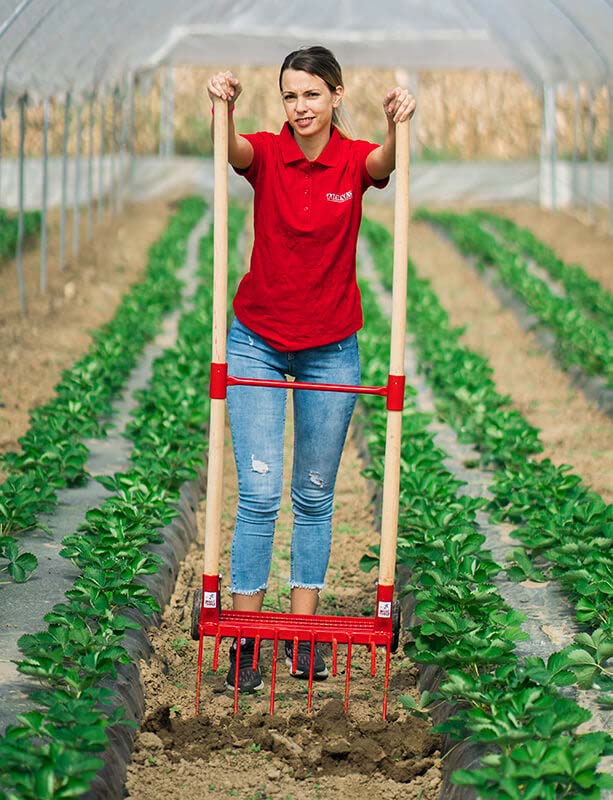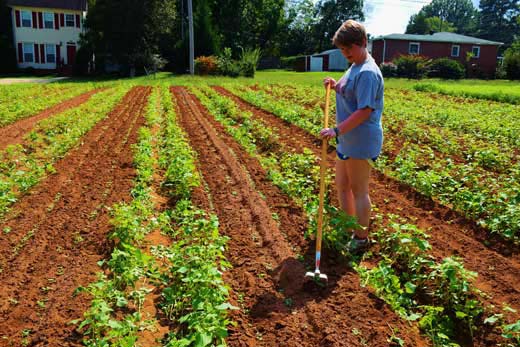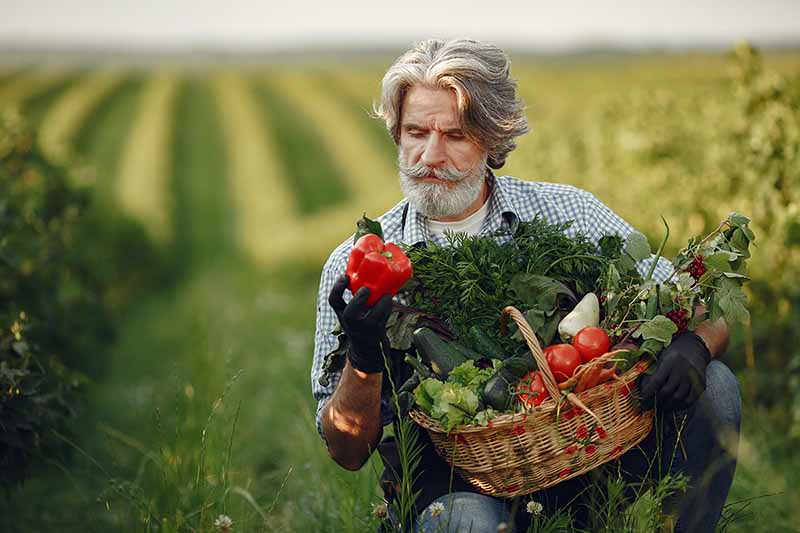Tilling soil by hand with the innovative Broadfork
Tilling soil as the oldest agro-technical measures
Tilling soil by hand today does not require invasive techniques but the use of modern tools designed to improve tillage techniques. Such tools should allow for minimal impact on the soil. In fact, one of the oldest agro-technical measures is land cultivation, which starts the process of growing plants and plant production. These measures enable favorable soil properties, and in the following text, we will present the modern successor of the shovel- the Irgot Broadfork.
For the production potential of crops to come to full expression, it is necessary to apply several agro-technical measures, the most famous of which are tillage, fertilization, sowing, planting, weed treatment, fertilization, etc. Namely, for manual tillage, it is important to choose an adequate tool for work that, depending on its purpose, cuts the land, crushes and crumbles it, shakes, or overturns. With the help of supportive tools, the land is cultivated to the depth to which the working bodies of the tool reach or the ground is mechanically treated in another appropriate way.
In the cultivated soil, specific oxidation processes are accelerated, which affect the more intensive work of microorganisms, which directly affects the fertility of the soil. When it comes to smaller treated areas that serve the purpose of sustainability of greenhouses or backyard gardens, agro-technical measures are adapted to the new generation of tools, among which is the innovative Broadfork.
Source:freepik
Author’s URL: www.freepik.com/prostooleh
The complexity of the land in terms of typography, climatic conditions, and other vegetation factors means that any tillage is adapted to these conditions. In addition, plant production requires, as we have said, appropriate tools for work, as well as energy and time, in order to create optimal soil conditions for plant development.
Digging the soil with Irgot tools
Irgot products have specially adapted their purpose to the needs of the domestic region, improving the traditional design of hand-held agricultural tools. This new generation of tools allows easy tilling soil by hand and benefits everyone involved in organic production. When it comes to digging, as a form of deep cultivation, the Irgot Broadfork with its mechanical action on the soil leads to its overturning, crushing, and crumbling, which breaks the capillary pores and the earth’s crust. Specially designed forks are driven into the ground, crushing and grinding it under pressure. In this way, tilling soil by hand increases land volume compared to uncultivated soil by up to 50%.
The Broadfork also has a direct impact on weed destruction because it interrupts its growth and development. The forks on an operational base that is 30 cm or 50 cm wide pluck weeds and bury them at greater depths or extract them to the soil’s surface. The two dimensions of the Broadfork determine the height of the forks, so the smaller Broadfork is equipped with forks 21.5 cm long, while the larger one has forks 25 cm long. The depth of such cultivated soil is somewhat shallower and is used with the intention of creating a loose surface layer of soil.
In this way, tilling soil by hand should enable quality pre-sowing soil preparation or prevent weeds from growing. Unlike cultivated land, uncultivated soil is mostly rugged and compacted from trampling. The paths in the greenhouses have compacted soil, while in the open areas, the rain also leads to compacted soil. Exactly at that point, digging contributes to facilitating the flow of air and water into the cultivated land during the overturning of the ground.
Hand Tiller or rotary chopper
In terms of shallow soil cultivation, we also include soil tilling. The Hand Tiller is another tool for tilling soil by hand, which performs shallow tillage, and is used:
- after digging for additional soil shredding
- for mixing crop residues and weeds with soil for their decomposition
- in order to improve soil water permeability
- for the destruction of weed seeds, larvae, and pests
- and for a better microbiological structure of the soil.
Source:news.emory.edu
For tilling soil by hand, the most suitable are flat to slightly sloping relief surfaces that are continuously used for crop production, and such arable land includes:
- Fields – arable land that is regularly plowed and cultivated every year and on which numerous field and vegetable plants are grown
- Orchards and vineyards – arable land that is regularly cultivated, without the need to sample each year
- Meadows and pastures, which are not cultivated regularly, are considered a special category in relation to arable land.
Properties of tilling soil by hand
The importance of cultivating land is reflected in its physical, chemical, and biological properties. The direct impact of cultivating is reflected in changes in the level of physical properties. As we said earlier, tilling soil by hand can be in the form of crushing, crumbling, loosening, and the like. However, tilling soil by hand also has an indirect impact on the properties of the cultivated soil, which thus improves its structure:
- Soil homogeneity
- Better drainage of the soil, which allows easier penetration of water through the ground
- Higher air capacity of the soil, that is, good aeration
- Stimulation of oxidation processes that lead to better work of microorganisms
- Better penetration of fertilizers into the soil
- Reduction or rupture of capillary pores that occur after precipitation in the crust layer
- Better root development, which increases the absorption of nutrients from deeper soil layers.
All this contributes to further increasing the biological potential of the soil in order to make the crops more advanced.
Source:freepik
Tilling soil by hand also has drawbacks because tilled land is exposed to stronger erosion by water and wind. Furthermore, cultivated soil leads to accelerated loss of humus, and the reason for the reduced humus content in the soil is mainly the lack of fertilization with organic fertilizers. However, many years of tillage with a lack of organic matter can lead to deterioration of soil structure.
In any case, applying tools with innovative technical improvements can always be a good choice for work on smaller plots of land, which is the easiest way to check their impact on specific agro-technical measures. Whether you are already gardening or just planning to discover all the benefits of cultivating your garden or greenhouse, we recommend that you find out more about additional questions here.




